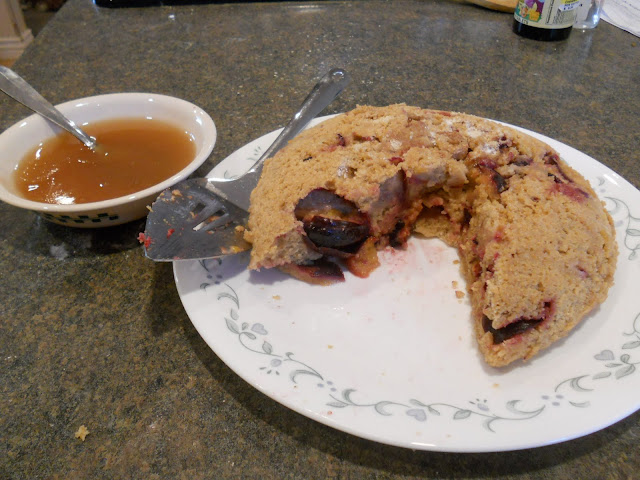Filling:
5 1/2 to 6 cups peeled, diced pears
1 1/2 tablespoons cornstarch
1/8 teaspoon salt
1/4 cup maple syrup
1 tablespoon lemon juice
1 teaspoon finely grated lemon zest
2 tablespoons minced candied ginger or 1/2 teaspoon ground ginger
1 1/2 tablespoons cornstarch
1/8 teaspoon salt
1/4 cup maple syrup
1 tablespoon lemon juice
1 teaspoon finely grated lemon zest
2 tablespoons minced candied ginger or 1/2 teaspoon ground ginger
Topping:
2/3 cup flour
3/4 cup rolled oats
1/4 cup packed brown sugar
1/4 teaspoon salt
6 tablespoons cold butter, diced
Heat the oven to 400°. Place the diced pears in a large bowl, sprinkle the cornstarch over them, and stir well. Add the remaining filling ingredients and toss gently, until the mixture is evenly combined.
Turn the filling into deep-dish pie tin and smooth the top of the fruit. Bake for 45 minutes.
While it's baking, make the topping. Combine the flour, oats, brown sugar, and salt in a large mixing bowl. Cut in the butter until you have large crumbs. Refrigerate the topping until you are ready to use it.
Lower the oven temperature to 375°. Remove the fruit from the oven and carefully pour the crumbs in the center of the pie, then spread them evenly. Return the pie to the oven and bake for 15 minutes. Transfer the pie to a rack to cool for at least 2 hours before serving.
1/4 cup packed brown sugar
1/4 teaspoon salt
6 tablespoons cold butter, diced
Heat the oven to 400°. Place the diced pears in a large bowl, sprinkle the cornstarch over them, and stir well. Add the remaining filling ingredients and toss gently, until the mixture is evenly combined.
Turn the filling into deep-dish pie tin and smooth the top of the fruit. Bake for 45 minutes.
While it's baking, make the topping. Combine the flour, oats, brown sugar, and salt in a large mixing bowl. Cut in the butter until you have large crumbs. Refrigerate the topping until you are ready to use it.
Lower the oven temperature to 375°. Remove the fruit from the oven and carefully pour the crumbs in the center of the pie, then spread them evenly. Return the pie to the oven and bake for 15 minutes. Transfer the pie to a rack to cool for at least 2 hours before serving.



























